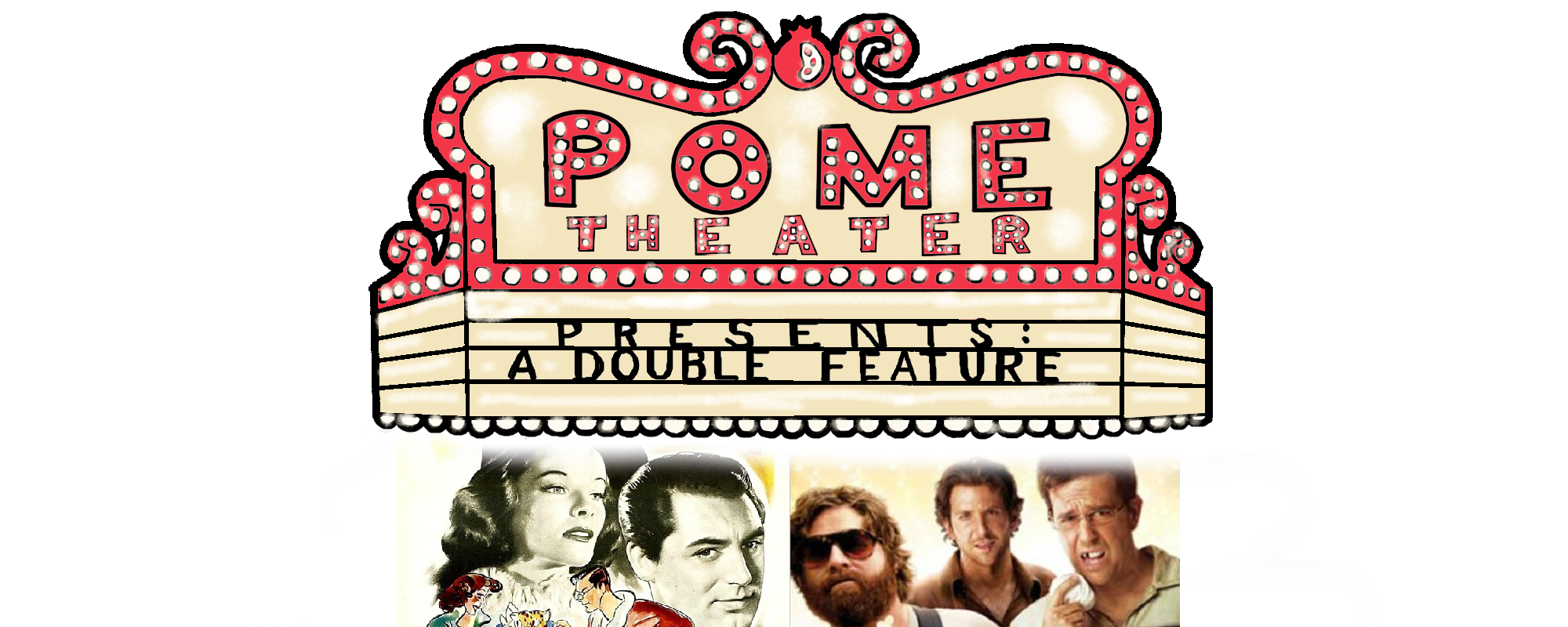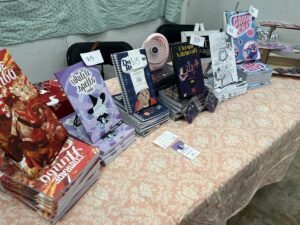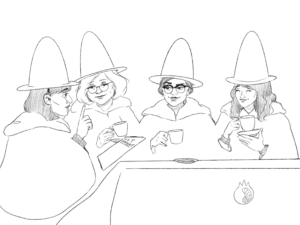For this week’s installment of “Jenny, Y’know I Don’t See How That’s Going to Work But I Trust You,” I present a truly delightful and inspiring piece of media, and a movie that I liked when I was sixteen because I thought liking it would make people think I was cool (it did not; I was not).
This Week:
 Bringing Up Baby — The Hangover
Bringing Up Baby — The Hangover
Bringing Up Baby
Bringing Up Baby (1938) is a classic example of a Screwball Comedy; I mean, it has it all: a strong and stubborn female protagonist, absurdly escalating situations, class differences, witty repartee — the works! Also, #Looks for DAYS:
Ever-lovely Katharine Hepburn is a wealthy woman of the world, and she decides to marry Cary Grant, a humble paleontologist. Also, she has a pet leopard, who sometimes maybe just wanders off?? ALSO, a dangerous leopard has just escaped from the local zoo. What could go wrong??? It is peak Screwball Comedy.
The Screwball Comedy is usually seen as a kind of sub-genre of the Romantic Comedy, because it is traditionally framed around marriage (see: comedy); but, it has always distinguished itself thematically with a lot of slapstick and snappy dialogue, but also by paying particular attention to class dynamics and by featuring really strong female leads.
One of the biggest genre conventions here, really, is the eventual marriage across class lines, usually with the woman being the wealthier partner (and this is blah blah relevant historically because of blah blah gender roles and blah people in the Great Depression liked seeing wealthy people submissive blah).
(real #relatable, though)
Anyway, The Screwball Comedy was Good for Women considerably earlier than most things — Bringing Up Baby, for example, was based on a short story written by Hagar Wilde (a woman), and then she was brought on to the writing team to help adapt it!
And when it was adapted to the screen, the film was also tailored around the leading lady, ever-lovely Katharine Hepburn (notable wit and Bryn Mawr Alum).
And besides that, in general these movies were made to feature strong women because they were fundamentally about showcasing a dynamic partnership — a balanced partnership — in large part just because, y’know, that’s good TV, but also because these movies end in marriage and they actively set out to show that marriage really is a partnership.
The Hangover
The Hangover (2009) is really not all bad — I mean, it was a critical and commercial success, undoubtedly (it won a Golden Globe!); it was the first time I’d seen anything with Zach Galifianakis in it (and thus the first time I realized that boys could be gross and cute at the same time); Ed Helms’s song is pretty cute (minus the suggestions that a big game cat would be sexually attracted to a human woman), I guess.
(fun fact: this calls back to an iconic scene in Bringing Up Baby where they have to sing in order to soothe the leopard)
My trouble with The Hangover is not so much a symptom of my #misandrylife but more due to my frustration with the general Hollywood trend that it represents.
Like, when you put this movie right up next to Bringing Up Baby, you can really see the extent to which women are forced into the periphery. This is common in a lot of the “bro-mance” movies made popular by Judd Apatow et al in the mid-2000s (a genre with which I genuinely have few qualms — anytime something is made explicitly for the purpose of celebrating friendship, I’m probably down).
Now, I understand that these movies are about friendships between men (and so it’s mostly okay that women are relegated to the sidelines, insofar as it makes sense that a movie about man-friendship would focus mostly on men), but when you look at the way those women are treated, as characters, it really starts to feel a lot less okay.
The primary women in the movie include: Stu’s cheating girlfriend (Melissa), the escort for whom Stu leaves his cheating girlfriend (Jade), and Doug’s fiance/Alan’s sister (Tracy).
Melissa is unequivocally The Worst — both emotionally and physically abusive, completely unredeemable — because her character was created to be that way. She’s not a real person (not to say that women are never abusive; of course they are), but rather she is a construction of everything that can be bad in a relationship. She is as much an unrealistic farce as the manic pixie dream girl or any other constructed positive ideal.
And so we come to Jade, who is just a perfect cinnamon roll, too good for this world, too pure (except for the part where she only exists to be sexualized).
To the same extent that Melissa is demonized, Jade is canonized, portrayed as Gillian Flynn’s Cool Girl™, who, by definition, does not actually exist. She, like Melissa, is just a constructed impossibility, devoid of humanity, who only exists insofar as she relates to Ed Helms (Stu)/his relationships with and reactions to women.
ALSO, she is constructed in direct opposition to Melissa — created only to shine by contrast; she gives meaning to and is given meaning by the existence of Melissa; they cannot and do not exist without each other and are thus not whole or realistic characters.
Tracy, similarly, gets literally zero personality development, but also she is rarely, if ever, seen without her stern and over-protective father (but let’s not get into all of my issues with the whole “women are property to be protected and then passed from father to husband” trope right now).
She is, however, wealthy enough to remind us that in the traditional Screwball Comedy, she would be our strong-willed and sharp-tongued leading lady — the movie would be about her and Doug, and about how well their distinct personalities compliment each other. But in shifting the focus to the relationships between the male characters, literally ALL of the energy that can been used to represent the depth of which human beings are capable gets focused onto them as well (and it shouldn’t!! That’s dumb and lazy writing!! This is my whole Point!!).
This movie just takes all the foundational elements of Screwball Comedies like Bringing Up Baby and pushes the women out until what we’re left watching is just Bradley Cooper get tazed in the nuts (admittedly, though, I do enjoy watching Bradley Cooper get tazed in the nuts).
The Hangover threw all of these genre signifiers in the garbage — it took the wedding/relationship and the class dynamics and just shoved them from the climax to the outermost frame; it took the trope of the sharp and strong leading lady and just threw her out completely. All it kept, really, was the absurd escalation, but built its pacing more on the modern capitalization of cringe-worthy second-hand embarrassment — ex: Meet the Parents, The 40-Year-Old Virgin, etc. — than the historical foundation of goofy hijinks.
Just! you can have a funny movie about guys being dudes — a movie where Bradley Cooper gets tazed in the nuts — and you can also treat the women in it like people!
My point here, really, is just that these big budget Hollywood DudeMovies are building off the backs of women-focused (and to some extent women-created) media, and it sucks to watch them turn away from that tradition so completely.
But, as a little pick me up after such a downer, I have for you yet another #iconic #look from the ever-lovely Katharine Hepburn. Bask in its glory:
Anassa Kata and You’re Welcome











